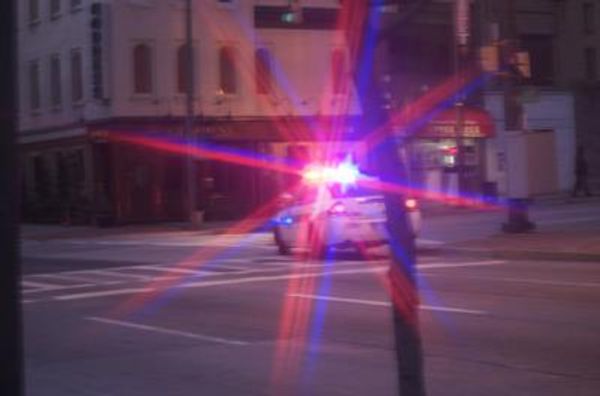DENVER — The days of explorers ambling into Colorado’s backcountry, gathering kindling and sparking a fire for some supper and perhaps a s’more or two are gone.
Long gone, experts say.
The state’s too dry. Too warm. Wildfire risk is too high and the season lasts all year now. The danger of a camper accidentally sparking a devastating wildfire is too serious.
So the windows when campers face no fire restrictions — imposed by county or federal officials — are starting to shrink.
“It’s not rocket science,” Jonathan Coop, a forest ecologist with Western Colorado University, said. “The landscapes are becoming a lot more flammable as it becomes warmer and drier.”
While land managers are unlikely to ban traditional campfires entirely — especially considering the state’s $37 billion outdoor recreation economy — campers must still adapt to that “new normal” to which climatologists keep referring.
They must learn to live with fire in a new way, Coop said.
'Constant fire ban'
Campfires hold a special place not just across the West but also in American lore.
They’re a beacon in the night, conjuring memories of camp songs, fresh meals, piping-hot coffee and much-needed warmth. They might draw in weary and friendly travelers just as they might ward off unwanted visitors.
And for the most part, campers across Colorado seem to be familiar with the notion that they should check local fire restrictions before heading into the wild, Birch Barron, director of emergency management for Eagle County, said.
But conditions that lead local officials to impose fire restrictions are worsening, acknowledged Barron said.
“Certainly we seem to be having more and more fire restrictions,” Coop said.
At the Boy Scout camp in Elbert, a dry windy area in a valley by Black Forest, conditions are certainly worsening, said Willie Rochester, camping director for the Denver Area Council of scouts.
“It’s pretty much on a constant fire ban,” Rochester said.
While conditions aren’t quite so bad at their camp in Ward, up in Boulder County, Rochester said leaders still must work around the challenges to help scouts learn about the outdoors and earn their “firem’n chit” certificate. That badge grants scouts “the right to carry matches and build campfires,” according to the Boy Scouts of America website.
At either camp, scout leaders keep in close contact with county officials and keep a fireman on site to ensure they’re as safe as possible, Rochester said. These days anyone looking to backpack into the wild and start a fire there is likely to face some “pretty big restrictions.”
'Very flammable landscapes'
Fire restrictions vary between counties and federal lands but generally they dictate whether campers are allowed to strike a fire and, if so, where. Certain restriction stages might prohibit campfires in the backcountry but allow them in designated metal or concrete fire pits and picnic areas.
Higher restrictions can prohibit campfires entirely.
Despite the spring months historically serving as a wet time of year, especially as snowpack begins to melt off, as of Tuesday, 24 of Colorado’s 64 counties and one Native American tribe reported at least some fire restrictions in place.
Climate conditions tracked by local, state and federal officials who impose the restrictions are worsening.
One data point many of those officials watch is called the energy release component, or ERC, Barren said, and it offers insight into moisture levels of plant life in the area that might feed a wildfire.
In short, the ERC measures how hot a wildfire is likely to burn, Natasha Stavros, director of the University of Colorado’s Earth Lab Analytics Hub, said. The hotter a fire burns, the larger the flames are, the quicker it spreads and the harder it is to extinguish.
The ERC is increasing up to 50% its normal levels across the West, Stavros said.
Other metrics are worsening too.
Because of climate change, grasses that tend to fuel wildfires are seeing up to a 70% increase in growth, Stavros said. And then during the summer and fall months they dry out, making ideal fuel for wildfires.
The state is becoming hotter and drier for longer periods of time, Stavros said, making for some “very flammable landscapes.”
Aside from those data points, Dan Gibbs, director of Colorado Department of Natural Resources, said officials must also consider the economic realities. If one county imposes a fire ban and another doesn’t, tourists will likely head elsewhere.
Gibbs, a former Summit County commissioner and wildfire fighter, said he tended to take a more conservative approach when considering whether to impose restrictions. The more people gathering in an area, the higher the risk.
Sometimes human-caused fires come from campfires left unattended, Gibbs said. Sometimes they come from a cigarette but or sparks thrown from chainsaws, vehicles or trains.
“It takes just a simple spark on a windy day,” Gibbs said. “You may think you have everything under control but then the wind comes and it gets out of control quickly.”
Over the past four years humans are responsible for an average of 42% of Colorado’s wildfires, according to data collected by the National Interagency Fire Center. And generally human-caused fires burn far more land than those caused by lightning.
Looking at 2020, when the state’s three largest wildfires burned, humans caused 621 fires while lightning caused 459, NIFC data shows. On average each human-caused fire burned 721 acres to the 387 acres burned by lightning fires.
A good way to minimize wildfire devastation in Colorado is to reduce the human element, Gibbs said.
But it’s unlikely that campers in Colorado will see year-round fire bans, Coop said. The tactic probably wouldn’t be the most effective option anyway, he said.
'It’ll still rain in the future'
While the state continues to suffer from an ongoing megadrought and conditions are expected to worsen, Coop said windows where campfires will be allowed are likely to remain, even if they’re rarer.
“It’ll still rain in the future. We’ll still have snow in the future,” he said. “And there will be times of the year when fire risks are still very low.”
Campers set on having their own fire can pay close attention to local restrictions and look for those windows, Gibbs said. That likely means they’ll have to be more flexible in where they’re willing to go and when.
They can also substitute a propane stove for the traditional fire, Gibbs added.
No restriction or recommendation will ever be perfect, Coop said.
“Humans are careless with fire,” he said. “We always have been and we always will be.”
Instead people should learn to live under these new circumstances, understand the risks and navigate them accordingly, he said.
When the scout camps are allowed to have fires, Rochester said they’ll take extra precautions.
Sometimes scouts will use makeshift “burn barrels” where the entire fire is contained and elevated off the ground, he said. Or they’ll increase the amount of protective space they give the fires.
“If it used to be a 10-foot radius, maybe we have a 20-foot radius with a water tank nearby with a hose on it,” Rochester said. “Just in case something happens, we’re prepared.”
Sometimes, campers are just going to have to accept the fact that they shouldn’t have a fire at all, Gibbs said.
After all, you can still have a great time in Colorado without a campfire, he said.
———







